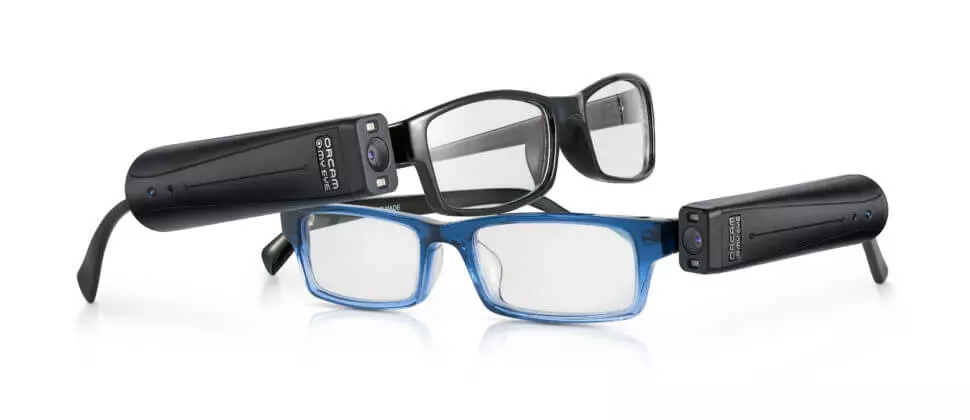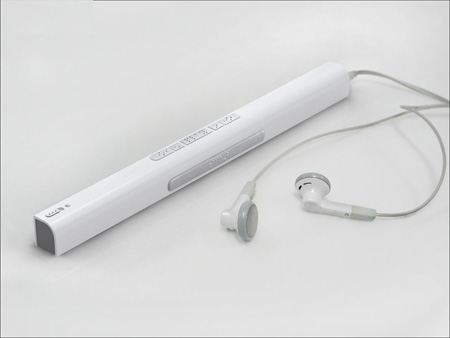Wearable Technology for Low Vision: Making Everyday Tasks Easier
Discover Innovative Devices Made for the Aesthetically Damaged
The advancement of innovative devices for the aesthetically impaired stands for a substantial improvement in accessibility and self-reliance. Technologies such as smart glasses with AI abilities and mobile applications designed to supply auditory summaries are reshaping everyday experiences for customers.
Smart Glasses for Navigating

Smart glasses designed for navigation are transforming the way aesthetically damaged individuals connect with their atmosphere. These advanced tools utilize a mix of cam technology, artificial knowledge, and auditory responses to offer real-time information regarding surroundings. By using challenge detection systems, clever glasses can notify customers to prospective risks, enabling more secure movement in both strange and familiar setups.
The integration of GPS modern technology additionally enhances navigating abilities, permitting individuals to obtain auditory instructions as they move. This hands-free strategy not just fosters freedom but likewise encourages visually damaged people to navigate metropolitan landscapes with raised confidence. Furthermore, several smart glasses are furnished with attributes that identify sites and street indications, giving contextual information that improves the customer experience.
Additionally, the advancement of these tools is continuously advancing, with firms functioning to boost the precision of object recognition and broaden the array of navigational features. As wise glasses end up being extra cost effective and accessible, they hold the prospective to substantially change day-to-day live for aesthetically damaged customers. Eventually, these innovative tools stand for an essential action toward inclusivity, offering improved flexibility and a better feeling of freedom for people browsing the world around them.

Mobile Application for Daily Living
How can mobile applications improve the lives of visually damaged people? Mobile apps are reinventing the means visually damaged customers navigate their settings, manage everyday jobs, and gain access to info. These applications offer important assistance with different functionalities, promoting independence and boosting lifestyle.
Numerous ingenious mobile applications are designed especially for day-to-day living. Applications like Be My Eyes attach aesthetically damaged customers with sighted volunteers using video clip telephone calls, permitting them to obtain real-time help with jobs such as checking out labels or navigating unfamiliar spaces. Similarly, Seeing AI, developed by Microsoft, uses synthetic intelligence to describe environments, reviewed message, and determine items, efficiently transforming a smartphone into an effective device for everyday support.
In addition, navigating applications customized for the visually impaired, such as Aira and BlindSquare, supply audio-based instructions and environmental details, making it possible for individuals to traverse their surroundings securely and confidently. Past navigation and immediate aid, mobile apps also sustain organization and job administration, with features that aid individuals set suggestions, produce to-do listings, and track visits. In recap, mobile applications work as important resources, encouraging visually impaired people to lead even more independent and satisfying lives.
Wearable Technologies for Support
Empowerment through modern technology is significantly apparent in the world of wearable gadgets designed to aid aesthetically impaired people. These innovative tools incorporate perfectly right into day-to-day live, enhancing navigation and giving important responses to users. Clever glasses geared up with cams can check out and identify faces message aloud, allowing individuals to engage even more with confidence in expert and social setups.
An additional notable development is making use of haptic responses systems in wearable tools. These systems utilize vibrations or other responsive signals to share information about the user's setting, such as challenges or adjustments in terrain, improving flexibility and safety and security. Wearable technologies also consist of wristbands that attach to smartphones, alerting users to notifications through refined resonances, hence boosting connection without reliance on visual cues.
As these technologies remain to advance, they are not just boosting freedom for aesthetically impaired individuals but also cultivating a better feeling of incorporation in culture. By linking the void in between difficulties faced in daily living and the possibility for autonomy, wearable modern technologies work as critical tools in the pursuit for equal rights and empowerment for those with visual impairments.
Audio Summary Tools
Audio summary devices play a crucial duty in improving ease of access for aesthetically impaired Web Site people, supplying them with the ability to involve with visual media. Wearable technology for low vision. These devices use narrated descriptions of crucial visual aspects in films, tv shows, and live performances, ensuring that customers can fully understand the context and emotions communicated through visuals
Sound summary can be integrated right into different systems, including streaming solutions, cinema screenings, and live cinema. Numerous preferred streaming solutions now consist of audio description as an ease of access feature, permitting audiences to pick it quickly. Along with conventional media, specialized applications additionally exist, supplying audio descriptions for art events, museums, and other cultural occasions.
The effectiveness of audio description depends upon the skill of the storytellers, who must communicate aesthetic information succinctly without interfering with the original sound. Innovations in this field are likewise leading the means for even more customized experiences, where individuals can readjust the degree of information and pacing according to their preferences.
Braille Innovations and Tools
Braille developments and devices have actually substantially transformed the means visually damaged people communicate with text and details. Modern developments have caused the development of functional tools that boost proficiency and independence among users. Significantly, Braille display modern technologies have evolved, permitting for dynamic analysis experiences. These devices convert electronic text right into Braille, making it possible for users to access a huge array of info on smartphones, tablets, and computer systems.
In addition, portable Braille notetakers combine conventional Braille input with contemporary performances, promoting note-taking, organizing, and record editing on the go. OCR devices for the blind. These portable tools often include text-to-speech capacities, linking the void in between Braille and acoustic details
In enhancement, innovative Braille printers have arised, enabling customers to create Braille tags, documents, and educational materials successfully. This access cultivates higher participation in expert and educational environments, inevitably advertising inclusivity.
Additionally, research right into wise Braille technologies proceeds to broaden. Devices that include expert system are being explored to provide real-time navigating assistance and contextual details, improving the user experience in varied settings. Overall, these innovations reflect a dedication to empowering aesthetically impaired people through modern technology, guaranteeing they can easily gain access to and engage with the world around them.

Conclusion
The innovation of cutting-edge tools for the aesthetically impaired substantially enhances freedom and quality of life. click for source These technologies not only foster better addition yet also advertise autonomy in everyday tasks, ultimately adding to a more equitable and obtainable society for visually damaged people.
As wise glasses become more obtainable and affordable, they hold the possible to considerably transform day-to-day life for visually impaired customers. Mobile applications are transforming the method aesthetically damaged users navigate their atmospheres, handle day-to-day jobs, and access info. Apps like Be My Eyes link aesthetically damaged customers with sighted volunteers via video phone calls, enabling them to obtain real-time aid with jobs such as reading labels or navigating unfamiliar spaces.Furthermore, navigation apps customized for the aesthetically damaged, such as Aira and BlindSquare, supply audio-based directions and environmental information, enabling individuals to traverse their surroundings securely and with confidence.The innovation learn the facts here now of innovative tools for the visually impaired substantially boosts freedom and top quality of life.